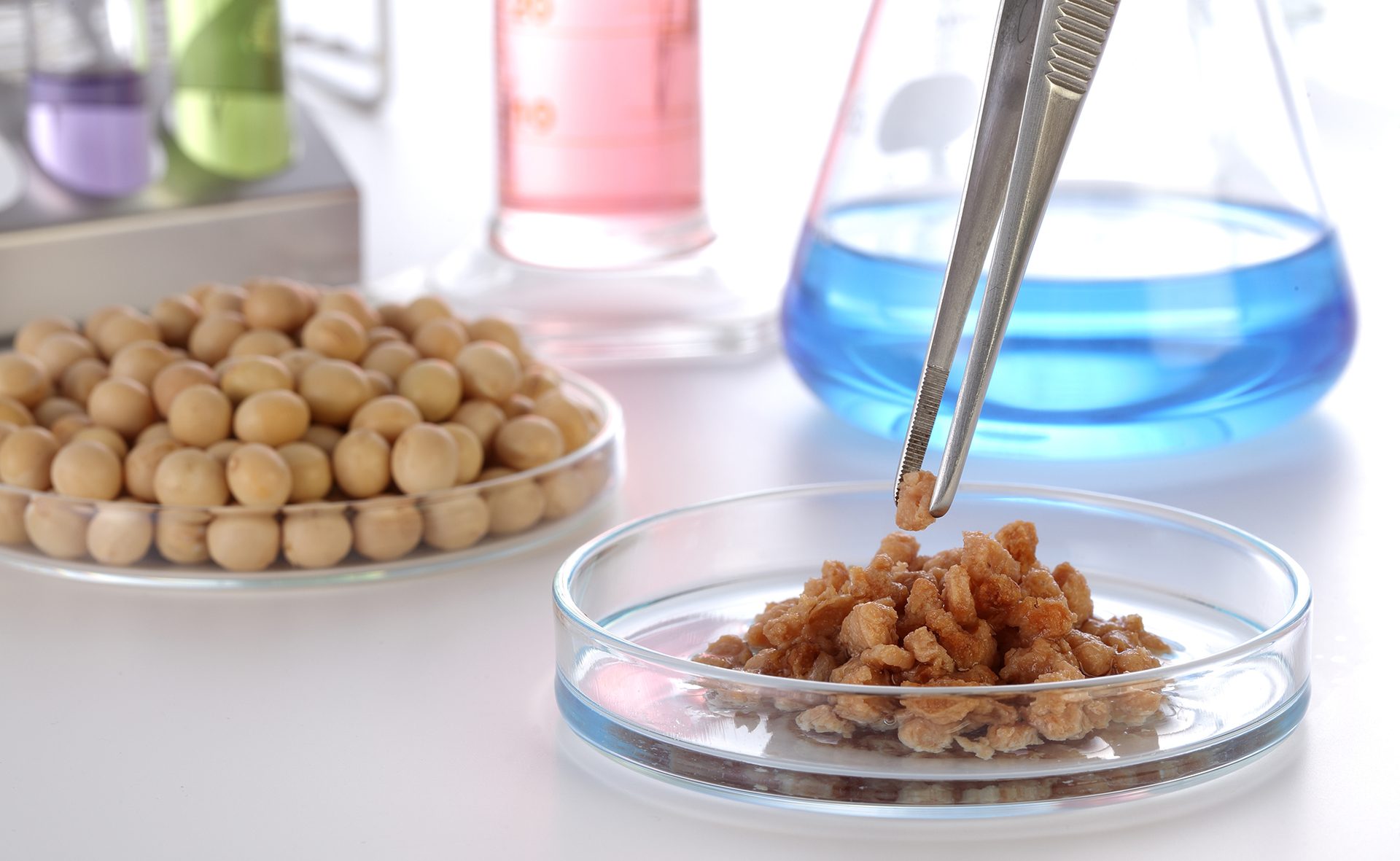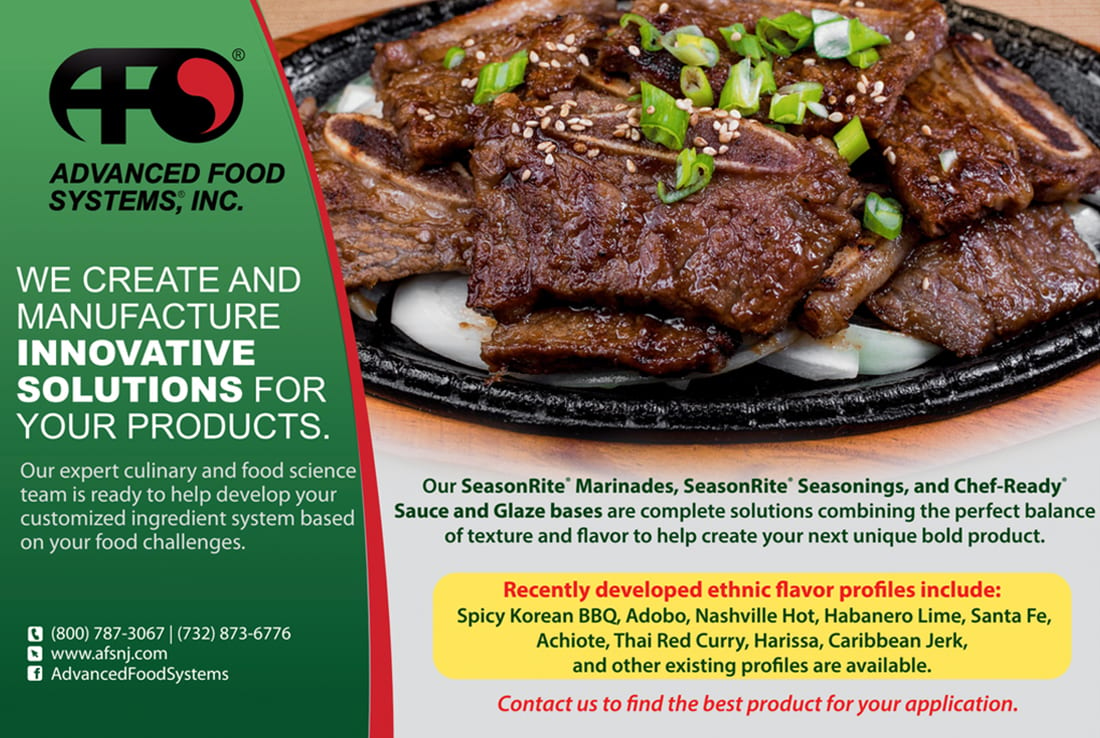MAY 2023

Alternative proteins PART 1
Technologies
Alternative Proteins:
Safety First!
Food security, environmental issues have reinforced plant-based, cell-based, and other “alt-proteins” as transformative solutions.
Part 1
Shifting consumer perceptions of plant proteins pose challenges for today’s plant-based product developers. Video courtesy of Getty Images / cyenidede
Protein alternates emerged as substitutes for conventional animal-based meat and dairy products with sources that were promoted as requiring less intensive production means. Industry focus has been on technological and industrial applications of alternative proteins, but it is the understanding of safety aspects that will be the key to long-term success. Failing to understand or ignoring the potential risks in producing or working with alternate proteins could inadvertently prove disastrous.
Plant-based proteins are the oldest and most widely used sources for animal protein replacement. But while they have the longest legacy of manufacture and use, plant-based proteins not only pose the risk of allergens, they also can be the source of anti-nutrients and thermally induced carcinogens.
By Kantha Shelke, PhD, CFS, Contributing Technical Editor

Fermented soybean cake (tofu and tempeh) or wheat (seitan), which have been consumed for centuries in Asian communities, and texturized vegetable proteins (TVP) from soy, wheat gluten, pea, and chickpea, used for decades as vegan alternates to conventional meat, did not emulate the sensorial properties of animal-based meats, nor were they truly intended to. These products were meat substitutes rather than analogs. To this end, they were not as manipulated as are the plant proteins on the market today.
Differences matter
The inherent differences between plant and animal proteins vary, depending on the plant source and how the protein is extracted and used. There are significant differences in physical and nutritional features, physiological properties, textural characteristics, and amino acid retention following extraction and thermal processing. Essential nutrients⏤typically vitamin B12, vitamin D, calcium, zinc, iron, and long-chain omega-3 fatty acids⏤often are missing from a diet that relies solely on plant proteins.
Mycoproteins are gaining greater use due to their ability to mimic textures of animal-based meats. Photo courtesy of: Meati, Inc.

Shifting consumer perceptions of plant proteins pose challenges for today’s plant-based product developers. Photo courtesy of: Getty Images / studiocasper
Plant-based meat and dairy analogs also can carry pathogenic bacteria originating from the raw ingredients. A critical issue for plant protein manufacturers is that, while extrusion inactivates some of these bacteria, it does not kill endospore-forming bacteria. Those that can survive extrusion processing include Clostridium spp. and Bacillus spp.
Another microbial risk is that the free amino-acid content and high pH of these proteins can favor recontamination by a range of pathogens, including Enterococcus spp. (especially Enterococcus faecium), Exigobacterium acetylicum, Acinetobacter spp., Staphylococcus spp., Lactobacillus sakei, and Carnobacterium divergens.
Worrisome inhibitions
Anti-nutrients, such as protease inhibitors, alpha-amylase inhibitors, lectins (especially phytohemagglutinins), polyphenols (particularly tannins), oxalates, goitrogens, phytoestrogens, and phytic acid, occur naturally in plants and are not destroyed during extraction and extrusion. Their negative physiological effects include altered gut function (via inactivation of digestive enzymes), reduced iron absorption, and endocrine disruption, among others.
Natural Toxins
Plants also produce metabolites designed to defend themselves against various threats and predators. Depending on the plant, these can include lectins, cyanogenic glycosides, glycoalkaloids, 4'-methoxypyridoxine, colchicine, and muscarine. It is therefore imperative for product developers to carefully select and process to avoid, remove, or deactivate such toxins.

Such anti-nutritional compounds can even be harmful when ingested in high quantities or in isolation. It is important to ensure their inactivation. Even thorough heat application (170°C –180°C) only partially reduces the amount of trypsin inhibitor, phytic acid and tannins in products derived from corn, soybean concentrate, peas, and cassava. Therefore, testing for anti-nutrients is essential to setting the baseline of safety for plant-based proteins.
Beyond intolerance
Allergens associated with legumes can cause mild to life-threatening conditions by eliciting IgE-mediated immunological reactions. Most of these allergens belong to one of three protein families: storage proteins prolamins and cupins, pathogenesis-related proteins (Gly m 4 in soy), or prolifins (Gly m 3 in soy).
Thermal processing has not been shown conclusively to reduce their allergenicity. However, studies suggest high pressure, ultrasound, and pulsed light may further reduce allergen activity and could become the reason for selecting one supplier over another.
Increased consumption of plants and reduced reliance on animal products is a winning idea with consumers as plant-based meal developers deliver higher flavor profiles with cleaner ingredients. Photo courtesy of: CuliNEX, LLC
The configuration of proteins is the key to acceptance or rejection by the human immune system. Protein extraction methods that use pH and electrophoresis to separate and precipitate proteins from their native state have the potential to change their configuration and thereby, their safety for consumption. Protein suppliers can use differential scanning calorimetry to establish protein intactness, which reflects unchanged configuration and relative safety of their raw materials.
Cell Based Future
Cell-based meat (also known as in vitro, lab-grown, cultivated, or cultured meat) is derived by differentiating and proliferating embryonic or satellite stem cells in fetal bovine serum-based media. Associated risks include viruses or infectious prions in the growth media, as well as the safety of genetic engineering methods used in large-scale production.
The emulation of the structure and texture of complex animal-based meats requires understanding of the implications of the choice of stem cells. Multipotent stem cells—those which can only be differentiated into certain types of cells—such as adipocytes for adipogenesis, skeletal cells for myogenesis, microvascular networks for vascularization, and endothelial cells and extracellular matrix for fibrogenesis are favored over pluripotent cells which can be transformed into any type of cell. There also are embryonic stem cells, which can carry ethical issues.
The growth medium is a serum that provides essential nutrients, plus hormonal and differentiation factors along with growth factors. These currently are expensive and also pose safety and ethical concerns.
Yeast extracts and hydrolysates derived from food by-products such as chicken carcasses, fish bones, pork plasma, eggshell membrane, and egg white powder are emerging as viable substitutes, but with questionable aesthetics on food labels. Cyanobacterial hydrolysates such as spirulina are in the pipeline and undergoing safety investigations as viable nutrient sources for culturing cell-based meat.
Several gaps are evident in the current knowledge of cell-based safety. The most apparent issues stem from the animal serum, which must be free of viruses that affect cattle. Another potential hazard in animal serum is pathogenic and infectious prion (PrPSC -), a misfolded protein associated with transmissible encephalopathies, particularly due to cross-species and blood-related transmissions.
The production of cultured cells for human consumption is unprecedented and will continue to require a thorough assessment of the safety issues associated with scale production of meats using genetic engineering. On the plus side, cell-based meat is considered less susceptible to zoonotic diseases than conventional meat and as future technology brings down costs and simplifies production, it promises to sharply reduce the ecological impact of animal husbandry.
While thermal processing is key to reducing microbial activity and some anti-nutrients and allergens, it may also induce the formation of suspected carcinogens, such as polycyclic aromatic hydrocarbons, nitrosamines or heterocyclic aromatic amines. More studies are required to determine the potential safety risk of these chemicals in plant-based meat analogs. Still, testing to establish their absence or presence can go a long way to ensuring manufacturer and consumer trust in the industry. End of Part 1
Regular contributor Kantha Shelke, PhD, CFS, is a senior lecturer at Johns Hopkins University and principal of Corvus Blue LLC, a Chicago-based food science and research firm specializing in industry competitive intelligence, expert witness services, and new product/technology development and commercialization of foods and food ingredients for health and wellness. Contact her at kantha@corvusblue.net.
MAY 2023


